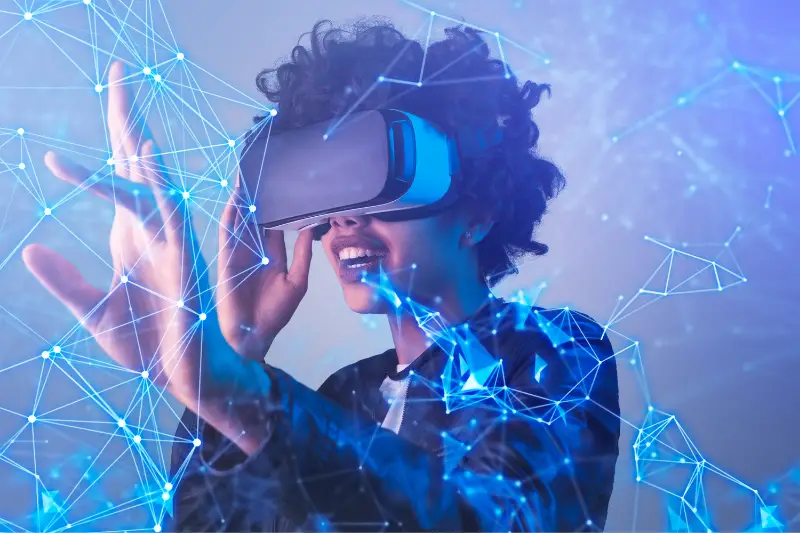
Introducing newer technologies to the internet has already changed the prepositions and raised many concerns about how the internet is used. As a result, it has become quite an issue. Hence, technologies are creating quite a stir, and further comparisons between Web 3.0 and Metaverse are rising.
Some ranging questions demand straightforward and honest answers. For example, which technological trend is more likely to shape the future landscape of the internet? And which technical method is secure to access the internet via the Metaverse or via Web 3.0?
These are the questions that are being asked in multiple areas as many organisations have recently decided to enter the Metaverse with their applications, following the adoptions by some large organisations regarding technology.
Currently, the global population is still struggling to become familiar with the essentials of technologies available, especially the Metaverse and Web 3.0.
Technologies and internet connectivity have a considerable impact. They are also reflecting on their differences and the implications for the future of most digital technologies.
Experienced technology professionals and tech experts explain that web 3.0 is colloquially referred to as the next version of the internet. It is well known to be a key figure in digital decentralisation as well as holding the key to the future of governance, data management and financial transactions.
The origins of web 3.0 can be traced back to web 1.0, which was practically the internet’s inception. It started in the early 90s and went to the early 2000s. When people were asked about their views regarding web 1.0, they thought of it as dial-up internet access on a large, box-sized PC monitor.
The era of the internet’s first-generation featured browsers like Netscape, Internet explorer, and Neoplanet. The web pages were static and crammed with a truckload of information. This also generated interest in eCommerce.
The years following web 1.0 were labelled as Web 2.0. It became popular with the aid of tech advocate Tim O’Reilly, which began in 2005 and has been going on until now.
In its truest sense, the internet evolved from sitting at home to now walking around with people in their hands, allowing them to access information anywhere, anytime. In short, it has been the most dominant form of the internet for the previous 15 to 20 years.
Factors like mobile devices, social media, cloud computing, and Software-as-a-Service (SaaS) are the primary characteristics defining the late stages of web 2.0. Other aspects that define it are an immersive experience, User-Generated Content (UGC), eCommerce, and the sharing economy.
Moreover, mobile app development professionals from the cities of Bristol, Leeds, London and Southampton explain that the era of Web 2.0 saw the rise of many centralised digital and technology firms, like Google, Facebook, Orkut, and Twitter. As a result, the products of Facebook and Google became popular and almost indispensable to daily human life.
But in exchange for the free use of these products, consumers allowed these firms to control and monetise their data to the point where the consumers became the product. Web 3.0 aims to return the ownership of that data to the users without hesitation.
Web 3.0 has been in development ever since it made decentralised digital assets and the first Blockchain protocol – Bitcoin – in the year 2008. The era of Web 3.0 began somewhere in late 2020 or early 2021, when cryptocurrencies, NFTs and the whole Metaverse became commonly available. Here are the primary characteristics that define Web 3.0:
Web 3.0 is built on a decentralised blockchain protocol without centralised ownership of content, platforms or services. Meaning, that content creators on web 3.0 will be fairly compensated and that there will be a lot less red tape surrounding access to content.
The semantic web isn’t the same as Web 3.0 but is an underlying technology for the internet’s newest generation (the third generation). The Semantic web might enable multiple internet pages to be correlated by means of a semantic protocol. This can allow relationships between pages to become visible, indexed and searchable.
While both web 1.0 and 2.0 provide a two-dimensional experience, web 3.0 can be quite immersive and provide spatial experiences similar to those found in the real world. This spatial interaction will be a part of the digital information layer. It will utilise sensory triggers and controls, like voice, gesture, biometric commands and vice versa.
Such a characteristic helps connect Web 3.0 to the Metaverse. Yet the two technologies are different. Let us now have a look at the Metaverse and have a look at the key differences and similarities between it and Web 3.0.
The Metaverse is an immersive environment, three-dimensional (3D) in nature and powered by augmented, virtual, and mixed realities. These technologies allow users to interact with Three-Dimensional objects seamlessly.
It aims to create a replica of the real world, complete with designated areas for recreation, work and social activities. These virtual spaces are inter-workable, and the Metaverse would be hosted on Blockchain so that no single entity can control it.
At the moment, the Metaverse is being developed by Decentraland, The Sandbox and Meta Platforms Inc. Yet its widespread adoption is to be seen on par with the internet.
The definitions of the Metaverse and Web 3.0 are the first point of comparison. The Metaverse is a virtual reality computer domain where people can interact with 3D objects. They will also be able to interact with other users and virtual items by means of virtual reality goggles.
The underlying technology is a critical component in both Web 3.0 and Metaverse. The latter contains a lot of key technologies supporting its whole ecosystem. Coders need connection, interfaces, decentralisation, a creator economy, experiences, and supporting technology to build it.
Web 3.0’s main objective is to make a decentralised web-based on Blockchain and cryptocurrency only. Blockchain is governed by a decentralised network of computers, allowing users to interact with online services. Moreover, it can utilise public blockchain functionality to provide open access to people with a proper internet connection.
Another key distinction between both is potential use cases. Meta verse has potential applications. It is a new dimension combining entertainment, movies, games, education, simulation-based training and social networks.
Yet all of these metaverse applications are under construction. Hence, it is pretty early to predict that the Metaverse will be able to reflect all real world activities on an accurate footing virtually.
Developers are creating web 3.0 using a completely open-source code base. Attributing its development to a single individual is not possible. The Metaverse relies on coordinated efforts from new firms for development, even at least for the early stages. Once the platform is in place and the tools are made democratic, the code base is thus open-sourced.
The Metaverse is intended to be a cross between the actual and virtual world and will utilise both augmented reality (AR) and virtual reality (VR). Recently, Facebook announced that it would be focusing on it.
The company is achieving its objectives through VR use. Yet, AR is the future, whilst games allow people to escape the real world. Applications of AR are present in numerous fields, notably education and medicine.
You may also like: 4 Web Development Technologies that are Shaping the Future for Businesses
Image source: Shutterstock.com

Generating leads is a crucial...

Welcome to the Future of...

It is evident that social...